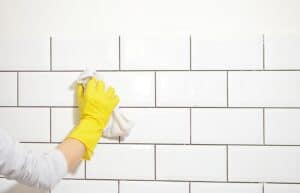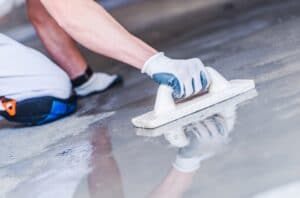The Best Tips for Caring for Your Timber Veneer Floors.

If you’ve got timber floors, then you know just how much extra personality they bring to your home. Timber veneer floors are one of the most popular timber flooring options out there these days, combining an affordable composite base with 100% natural timber laid over the top.
Keeping these natural materials looking their best can be a challenge, however, especially if you’re new to timber and you don’t know what you’re doing. We’ve compiled our favourite tips for caring for your timber veneer floors, to help them stay looking beautiful for years to come.
Use cleaning products that won’t harm the coating.
These days, most timber veneer floors come coated in solvent or water-based polyurethane. Some people may decide to use alternative coats, like oil or wax, but this is much less common in timber veneer than in traditional hardwood floors.
Cleaning your floors regularly is a big part of keeping your timber in great shape. However, you should check that the cleaning products you’re using are actually compatible with the coating on your timber floor. pH-neutral cleaners are generally recommended, whereas harsh acidic cleaners like bleach or vinegar can dull or damage your timber.
Just moved into a new home and not sure what kind of coating your floor has? Do a bit of research, ask around with the real estate agent or previous owner if you can, and always spot-clean an inconspicuous area first to check the results.
Mop with care! Don’t go overboard with the water.
Regular sweeping and dusting will do a lot for your floor. After all, one of the biggest advantages of wooden floors is that they’re very resistant to dirt.
However, there are times when you will need to mop your floor. Although timber veneer floorboards are significantly more moisture-resistant than traditional hardwood floors, you should still use caution when mopping. And don’t ever use a steam mop.
Excess water can damage your timber veneer over time. Instead, make sure to wring out your mop as much as possible beforehand and always do a relatively dry mop. Cool or lukewarm water is preferable as temperature fluctuations are also not good for timber.
In the event that you’ve chosen a timber veneer with a wax finish instead of polyurethane, you should never ever mop a wax finish!
Be conscious with your furniture – and with your feet!
The biggest threat to your timber veneer floor looking amazing is visible scratches and scuffs. Of course, wear and tear is an unavoidable fact of life, but there are some steps you can take to avoid the worst of it.
Always lift heavy furniture carefully when you move it around, and never drag or push it along the floor. Extra-heavy furniture may also need to be moved from time to time, to avoid forming permanent dents underneath.
The other big offender is your feet – in particular, your shoes. Shoes regularly track grit and small rocks through the house that scratch up the floor. Implementing a no-shoes policy might be the single most-effective step you can take towards maintaining a scratch-free floor.
If you have pets or small kids, then try placing rugs or runners in high traffic areas, and be sure to have mats at every outside door. These little fixes will go a long way!
Consider refinishing if your veneer is thick enough.
You may not have realised that some timber veneer floors can be refinished. While the timber coating on many veneer floors is too thin for refinishing, thicker timber veneers can generally be refinished 1-3 times over their lifespan.
This is something to consider if your floor has picked up a lot of scratches or the colour has faded over time. Refinishing involves sanding back the surface of the veneer and applying a new stain, colour or coating over the top. It looks as good as new and is great for a change.
As mentioned, timber veneer floors can’t be refinished endlessly the way that traditional hardwood can. You’ll only get a few goes (or just one!) before you can’t sand away any more veneer, so pick your battles wisely.
Timber veneer is incredibly durable, so you shouldn’t find yourself needing to refinish very often anyway. If you do decide to refinish, it’s a great way to extend the lifespan of your floor for years and years to come.
Timber Veneer’s multilayered construction makes it a fantastic flooring option. It’s more durable, less fickle and considerably more affordable than traditional hardwood flooring.
Natural flooring materials like timber look great in any home, but they do take a little bit of care and understanding. By keeping these 4 tips in mind, you should have an easy time keeping your timber veneer floors in excellent shape for years to come.
-
 11, Jul, 2022
11, Jul, 2022Feature Product: The Stain Proof Range
We regularly review some of our favourite products. Today, we’re... -
 5, Jul, 2022
5, Jul, 2022Concrete Sealer: What You Need to Know
Concrete is a sturdy material that’s practical and affordable. In... -
 24, Jun, 2022
24, Jun, 2022A Product Guide for DIY Pool Areas
Tiling a pool area is a great DIY project. In...


